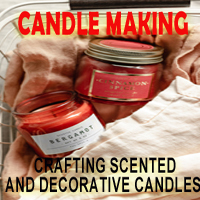


Craftsmanship And Artistry In Clay
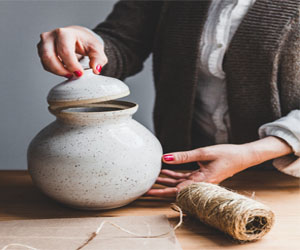
Handmade ceramics represent the epitome of artistry and craftsmanship in the world of pottery. These unique, handcrafted pieces have a timeless appeal that transcends trends and fads, and they continue to captivate art enthusiasts and collectors alike. In this article, we will explore the world of handmade ceramics, the artists who create them, and the enduring allure of these one-of-a-kind creations.
The Art Of Handmade Ceramics: Handmade ceramics are created through a process that emphasizes the artisan's personal touch and creative vision. Unlike mass-produced ceramics, handmade pieces are meticulously crafted by skilled artists who use their hands and a variety of techniques to mold, shape, and finish each piece. These techniques include coiling, pinching, slab-building, and wheel-throwing, allowing for a wide range of forms and textures.
The Creative Process: The creation of handmade ceramics begins with selecting the right type of clay, which can range from earthenware to stoneware to porcelain, each offering unique characteristics and possibilities. Once the clay is chosen, it's hand-worked into the desired shape, whether a functional piece like a bowl or a purely decorative sculpture.
Artists often experiment with textures, patterns, and surface treatments to give their pieces a distinct character. They may carve, incise, or use various glazing and decorating techniques to achieve their artistic goals. Each piece reflects the artist's individual style and creative expression.
The Human Touch: What sets handmade ceramics apart is the human touch evident in every detail. These pieces bear the imperfections and idiosyncrasies that result from the artist's hands, making each item truly unique. The texture of the clay, the nuance of the glaze, and the individual characteristics of the artist's work contribute to the rich diversity of handmade ceramics.
Functional And Decorative Art: Handmade ceramics serve a dual purpose in both the realms of functional and decorative art. Many artists create pottery that is not only beautiful but also functional, such as mugs, plates, and vases. These pieces add a personal and artistic touch to everyday life, enhancing the aesthetic experience of daily rituals like enjoying a cup of coffee or arranging flowers.
On the other hand, decorative ceramics explore the boundaries of the medium and often serve as standalone art pieces. Sculptural and abstract in nature, they challenge conventional notions of pottery and ceramics, pushing the limits of what can be achieved with clay.
The Role Of The Artist: Handmade ceramics emphasize the role of the artist as a creator, with each piece reflecting their unique perspective, skill, and creativity. These artists invest time and energy into honing their craft and often form a deep connection with the materials and the process itself.
Collectibility And Craftsmanship: The enduring appeal of handmade ceramics has led to a growing interest among collectors. Each piece carries the aura of the artist's hand, making it a tangible work of art with a story and history. Collectors appreciate the craftsmanship and artistic value of handmade ceramics, and many seek out specific artists and styles to build their own collections.
Handmade ceramics are a testament to the enduring appeal of artistry and craftsmanship in the world of pottery. These unique, handcrafted pieces celebrate the tactile and creative qualities of clay, and they offer a tangible connection between the artist and the collector. Whether functional or purely decorative, handmade ceramics continue to enrich our lives and surroundings with their beauty and artistic expression.
A Step-By-Step Guide
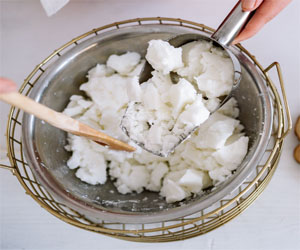 Gathering Materials
Gathering Materials
The first step in the candle making process is to gather all the necessary materials and tools. This typically includes wax (common options are paraffin, soy, or beeswax), a double boiler or microwave for melting the wax, a thermometer, wicks, fragrance oils, and candle dyes if you want to add color. It's essential to ensure that your workspace is clean and well-ventilated for safety.
Melting The Wax
Once you have all your materials ready, it's time to melt the wax. This can be done by using a double boiler or a microwave. If using a double boiler, place the wax in the top pot and heat it gently until it becomes a liquid. If using a microwave, cut the wax into smaller pieces, place it in a microwave-safe container, and heat it in short bursts until it's fully melted. It's crucial to monitor the temperature of the wax using a thermometer to prevent overheating, which can be dangerous.
Adding Fragrance And Color
If you want to create scented and colored candles, this is the stage to do so. Add fragrance oils to the melted wax and stir thoroughly to ensure an even distribution of the scent. Similarly, add candle dye to achieve your desired color. The amount of fragrance and dye you use will depend on the type and brand, so consult the instructions provided with your supplies.
Preparing The Wick
While the wax is still liquid, it's time to prepare the wick. Cut the wick to the desired length, making sure it's a couple of inches taller than your chosen container or mold. Secure the wick in the center of the container or mold using a wick holder or adhesive.
A Time-Honored Craft With Modern Relevance
 Connection To Tradition: Needlework connects us to our cultural heritage. Many techniques and patterns have been passed down through generations, preserving age-old traditions. This connection to tradition adds a layer of historical richness to the craft.
Connection To Tradition: Needlework connects us to our cultural heritage. Many techniques and patterns have been passed down through generations, preserving age-old traditions. This connection to tradition adds a layer of historical richness to the craft.
A Sustainable Hobby: Needlework is often sustainable and eco-friendly. Crafters can create practical, long-lasting items that reduce the need for disposable, mass-produced alternatives. This aspect of needlework aligns with a modern focus on sustainability and eco-conscious living.
Versatility: Needlework can take on various forms and serve diverse purposes. From functional items like clothing, home decor, and accessories to fine art and wall hangings, the versatility of needlework allows for a wide array of projects.
To explore the world of needlework and incorporate it into your life, consider the following steps:
Choose Your Craft: Start by selecting a specific form of needlework that resonates with you. Whether it's embroidery, cross-stitch, knitting, or crochet, choose a technique that aligns with your interests and goals.
Gather Materials: Acquire the necessary materials, such as fabric, thread, needles, and any other specific tools related to your chosen craft. High-quality materials can greatly enhance the final result.
Cultivating Wine's Essence
 Pruning: Pruning is a critical aspect of vineyard management, as it shapes the vines and influences the quality of the fruit. Pruning helps control the yield of the vine, ensuring that it produces a balanced crop with optimal grape ripeness. The timing and precision of pruning are essential to the health of the vines and the quality of the grapes.
Pruning: Pruning is a critical aspect of vineyard management, as it shapes the vines and influences the quality of the fruit. Pruning helps control the yield of the vine, ensuring that it produces a balanced crop with optimal grape ripeness. The timing and precision of pruning are essential to the health of the vines and the quality of the grapes.
Pest And Disease Control: Protecting the vineyard from pests and diseases is essential for a successful harvest. Integrated pest management techniques are often employed, which may include the use of natural predators, organic pesticides, or careful monitoring of vine health.
Harvesting: The timing of the grape harvest is critical, and it varies depending on the type of wine being produced. For sparkling wines or crisp white wines, grapes may be picked early for high acidity. In contrast, red wines may require longer hang times on the vine for optimal ripeness. Handpicking is still the choice in many vineyards, as it allows for the selective harvesting of the best fruit.
Sustainable Viticulture: In recent years, the wine industry has witnessed a shift towards sustainable viticulture practices. Many vineyards are adopting eco-friendly methods to preserve the natural balance of the environment. This includes organic and biodynamic practices that promote biodiversity, soil health, and minimal chemical intervention.
The Path To Healthier, Radiant Skin And Self-Confidence
 Understanding The Toxins: Non-toxic beauty advocates for the avoidance of harmful chemicals commonly found in many conventional beauty products. These chemicals, such as parabens, phthalates, formaldehyde, and artificial fragrances, have been associated with various health concerns, including allergies, hormonal disruption, and even cancer.
Understanding The Toxins: Non-toxic beauty advocates for the avoidance of harmful chemicals commonly found in many conventional beauty products. These chemicals, such as parabens, phthalates, formaldehyde, and artificial fragrances, have been associated with various health concerns, including allergies, hormonal disruption, and even cancer.
Clean Ingredients: Non-toxic beauty products are formulated with clean, safe ingredients. This means they exclude harmful chemicals and replace them with natural, organic, and plant-based alternatives. For example, clean skincare often uses ingredients like aloe vera, shea butter, and essential oils.
Sustainability Matters: Non-toxic beauty goes hand in hand with sustainability. Brands that champion non-toxic beauty often focus on eco-friendly packaging and sustainable sourcing of ingredients. By reducing their environmental footprint, they align with the principles of environmental consciousness.
Transparency And Accountability: Non-toxic beauty brands are known for their transparency. They provide clear information about the ingredients they use, their sourcing, and their production processes. This empowers consumers to make informed choices about the products they apply to their skin.
Cruelty-Free: Many non-toxic beauty brands are committed to cruelty-free practices. They don't test their products on animals, aligning with the values of ethical consumerism.
Non-Toxic Makeup: Non-toxic beauty extends beyond skincare to include makeup products. Non-toxic makeup brands provide a range of clean cosmetics, from foundation and lipstick to mascara and eyeshadow, offering a safer alternative for enhancing beauty.
The Beauty Of Green Handmade Goods
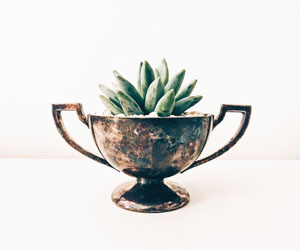 Artistic Innovation Meets Sustainability
Artistic Innovation Meets Sustainability
Green handmade goods are a testament to the union of creativity and environmental responsibility. Crafters and artisans across the globe are channeling their talents to produce items that not only serve a functional or decorative purpose but also adhere to eco-friendly principles. These goods are often made using natural or repurposed materials, creating a harmonious blend of artistry and sustainability.
Supporting Local Economies
One of the significant advantages of green handmade goods is their role in supporting local economies. Artisans and crafters, often small-scale businesses or individuals, contribute to their communities by crafting unique items. This helps strengthen local economies and reduces the carbon footprint associated with mass-produced, globally distributed products.
Exploring The Art Of Sewing Techniques
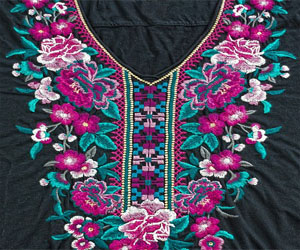 Backstitch: This technique reinforces seams by doubling back through the previous stitch. It's essential for creating strong, secure joins in fabric.
Backstitch: This technique reinforces seams by doubling back through the previous stitch. It's essential for creating strong, secure joins in fabric.
Zigzag Stitch: The zigzag stitch is used to finish raw fabric edges to prevent fraying. It's also handy for sewing stretch fabrics and creating decorative edging.
Seam Allowance: Understanding the appropriate seam allowance is crucial for constructing well-fitted garments and avoiding unnecessary bulk in seams.
Advanced Sewing Techniques: Once you've mastered the basics, you can explore advanced sewing techniques that offer more creative and functional possibilities:
Gathering: This technique involves stitching multiple rows of long, loose stitches, which are then pulled to create gathers or ruffles in the fabric. Gathering is often used in creating full skirts, puff sleeves, or decorative elements.
Bias Binding: Bias binding is used to finish raw fabric edges, providing a clean and durable edge with the help of strips cut on the diagonal (the bias) of the fabric. It's ideal for curved hems and necklines.
Darts: Darts are folded, stitched seams that provide shape and contour to garments, particularly for a better fit around curves like the bust, waist, or hips.